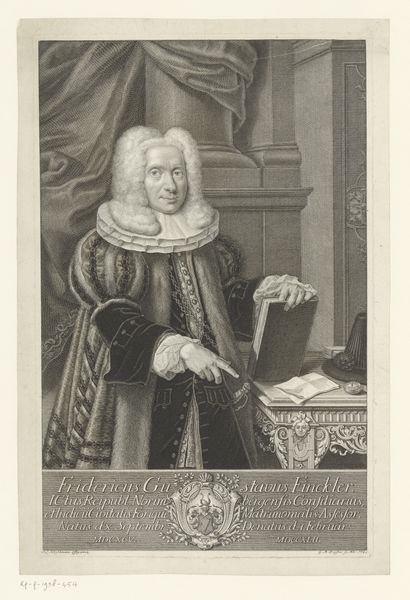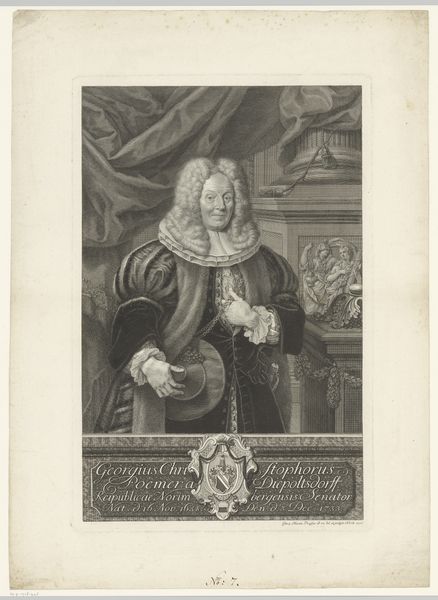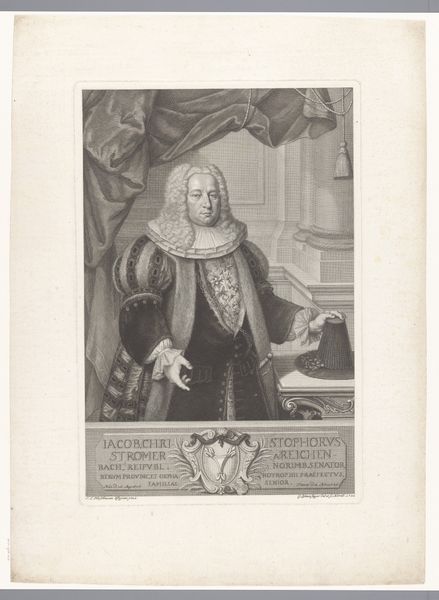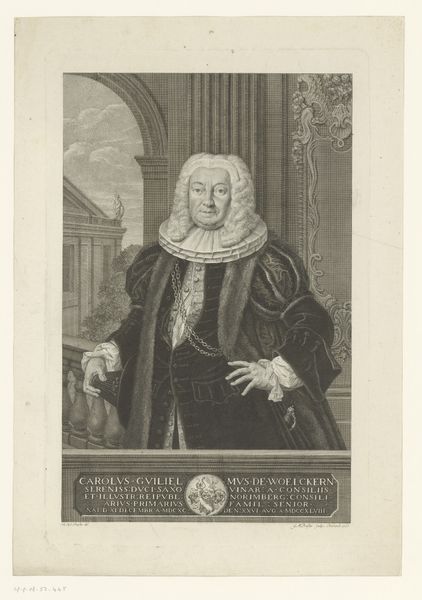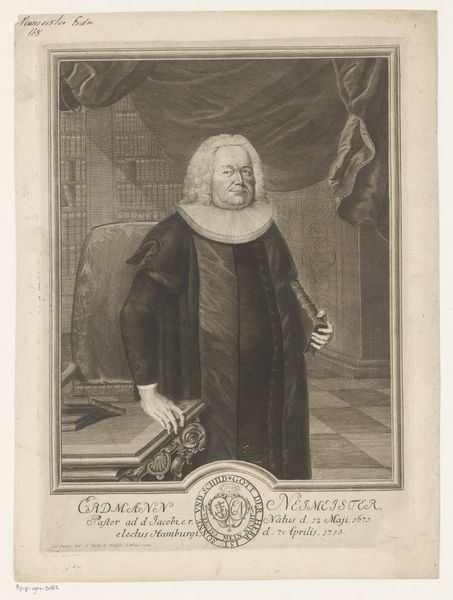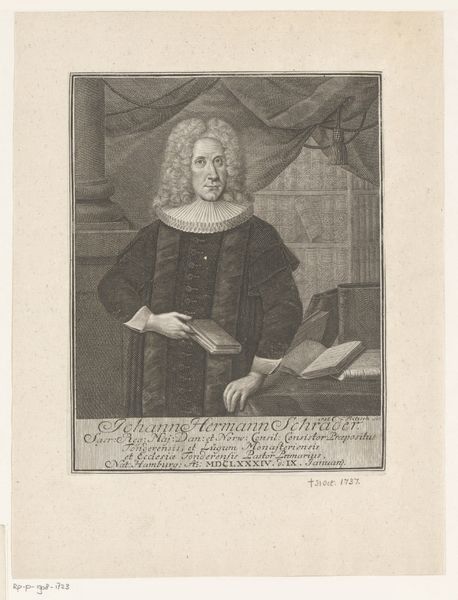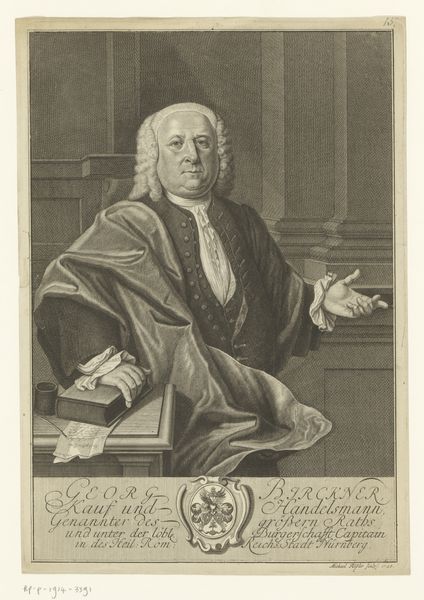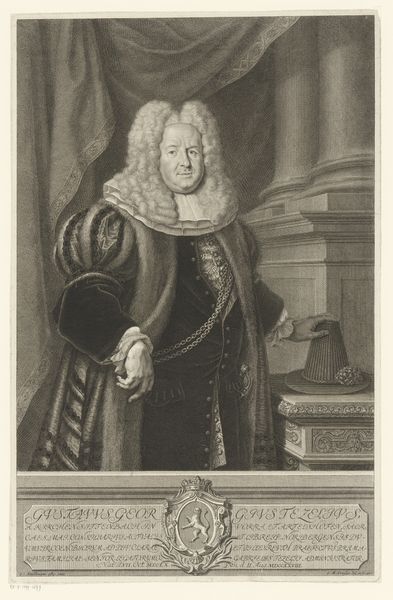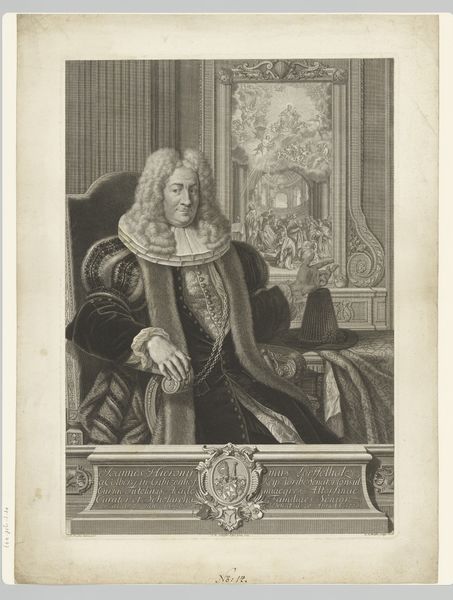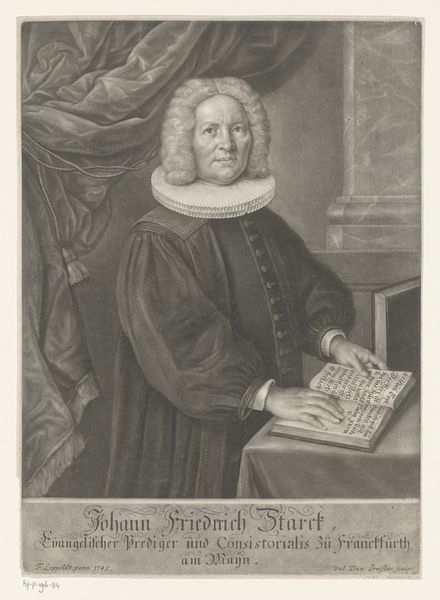
Portret van Johann Sigismund Holzschuher von Aspach und Harrlach auf Thalheim 1745
0:00
0:00
georgmartinpreissler
Rijksmuseum
print, engraving
#
portrait
#
baroque
# print
#
old engraving style
#
history-painting
#
engraving
Dimensions: height 482 mm, width 333 mm
Copyright: Rijks Museum: Open Domain
Editor: This is a print, an engraving actually, titled "Portret van Johann Sigismund Holzschuher von Aspach und Harrlach auf Thalheim" made in 1745 by Georg Martin Preissler. It depicts a very serious looking man in elaborate clothing. I am curious about the document he's holding, it looks like a map? What stands out to you? Curator: The map is interesting isn't it? Consider it as a symbolic device, signifying domain and perhaps knowledge of territory, literally mapping his influence. It reminds us that even seemingly objective depictions of land can be loaded with political and social meaning. Editor: Oh, interesting. So the map tells us more about the subject and what he values? Curator: Precisely! The portrait, typical of its Baroque style, goes beyond surface appearance. The ermine robes speak of status, of course, but look closer at the placement of his hand on the document. It is a statement of intent. An assertion of control through documented power. The pillar in the background further reinforces a sense of structure, tradition and lasting legacy. Editor: So, these aren't just aesthetic choices, they're communicating ideas. Is there a risk we misinterpret the symbols over time? Curator: An excellent point! Cultural memory shifts, and meanings can be lost or altered. Our interpretation relies on understanding the conventions and visual language of the 18th century, but also being aware of our own biases as 21st century viewers. It's a dialogue across time. Editor: It’s like trying to understand a language we only partly know. Thank you! It gave me much to think about. Curator: My pleasure! Reflecting on art this way illuminates the intersection between historical context and enduring symbolic meaning.
Comments
No comments
Be the first to comment and join the conversation on the ultimate creative platform.
